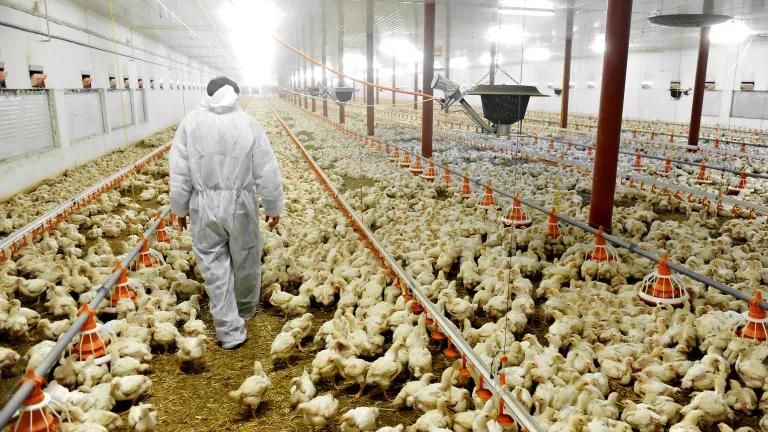What’s the Big Deal About Big Chicken (or Big Pork)

At least 2 million Americans suffer drug-resistant infections every year, and more than 23,000 die as a result. The numbers keep rising.
Antibiotic resistance is largely a numbers game: The more we use ‘em, the faster we lose ‘em. That’s as true for antibiotics used on chickens or pigs, as it is for antibiotics given to people. Curbing antibiotic use isn’t a question—it’s an urgent need.
The notion that antibiotics are a precious resource, to be stewarded not squandered, is still gaining traction. The path towards stewardship has been particularly rocky around antibiotics used on the farm, as Maryn McKenna explores in her new book, Big Chicken.
McKenna writes, for example, about the chicken industry’s use of ‘acronizing’ in the 1950s. Acronizing was the process of dipping chicken carcasses in diluted solutions of antibiotics while they were still being butchered, to give the chicken a longer shelf life. For much of the next half century, U.S. chicken farms routinely fed flocks of birds antibiotics to help them grow faster, on less feed.
McKenna was interviewed earlier today on Fresh Air, with Terry Gross. Fortunately, as they discuss, the chicken industry has started to change its approach to using antibiotics. By our estimates, close to half of chicken producers now raise birds with more responsible antibiotic use, or are pledged to do so within the next few years.
Many of the nation's largest restaurant chains have switched gears recently and are now offering chicken from birds raised without the routine use of antibiotics, responding to consumer demand for the same. It's been a very important spur for the industry as a whole to change, as NRDC and allies described in the latest Chain Reaction report.
Few U.S. restaurant chains, however, are also demanding pork or beef from animals raised without the routine use of medically important antibiotics. But they should. Unfortunately, the pork and beef industries trail the chicken industry. No major pork producers, including Smithfield or Hormel, for example, have pledged to stop feeding medically important antibiotics to herds of animals that aren’t sick.
Instead, they continue to routinely feed these precious drugs to healthy animals to avoid what they believe to be the risk those animals might get sick in the future, often because of the crowded and sub-optimal conditions that exist on those farms. We deserve better. And as Ms. McKenna points out, there are much better ways of raising animals for our dinner plates.



